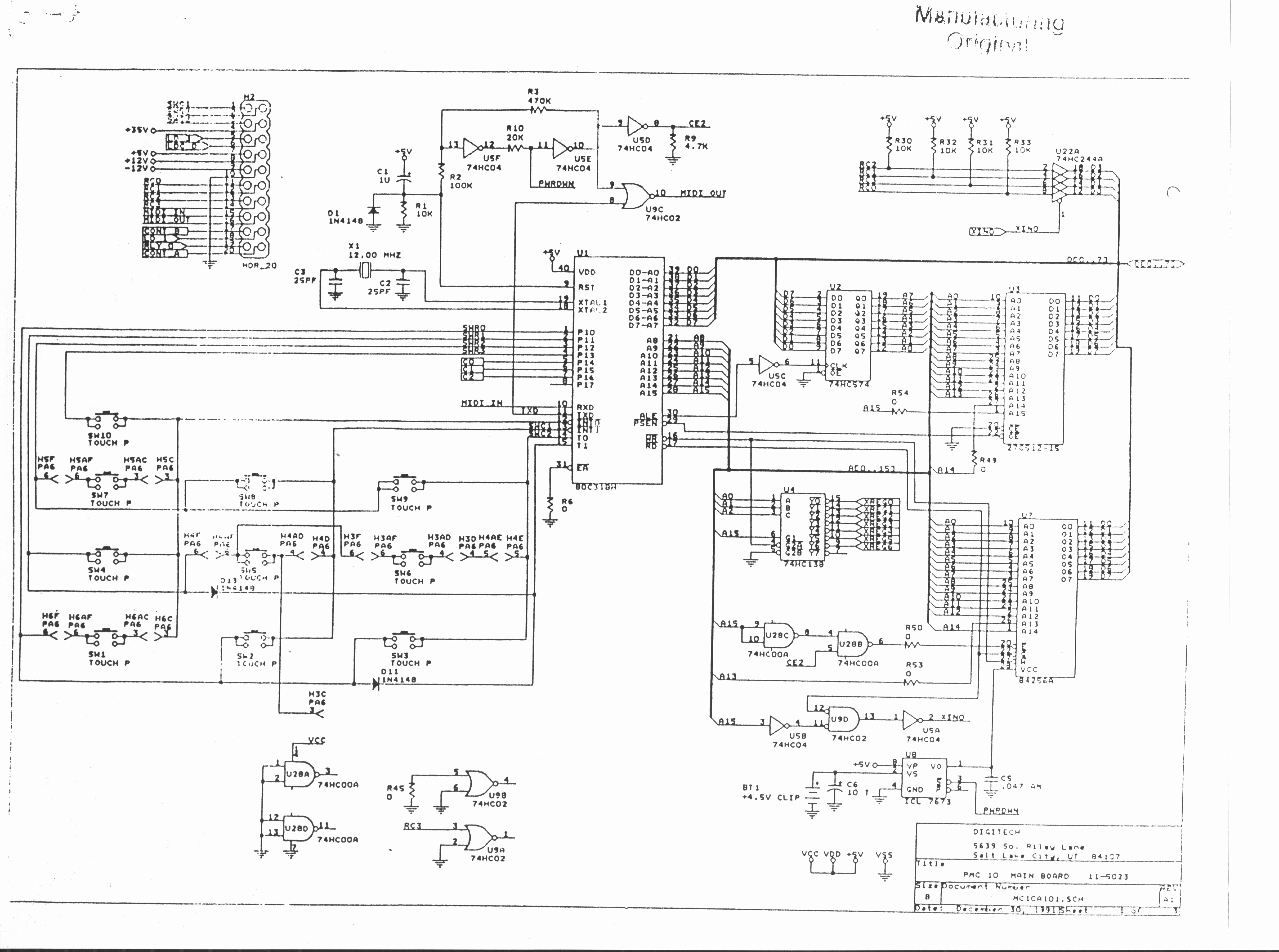English Owner's Manual Downloads. DigiTech Element XP Owner's Manual-English. Boneshaker Owners Manual. Ram manualsimilar dm800 service manualsimilar dodge neon owners manual similar digitech rp350 manualsimilar do manuals have cruise controlsimilar dodge aries. Digitech RP-1 Pdf User Manuals. View online or download Digitech RP-1 Owner's Manual.
] Opening the chassis for any reason will void the manufacturer's warranty. If liquid is spilled on the unit, shut it off immediately and take it to a dealer for service.

Power Sources: The appliance should be connected to a power supply only of the type described in the operating instructions or as marked on the appliance. Grounding or Polarization: Precautions should be taken so that the grounding or polarization means of an appliance is not defeated. ] Performance Mode When you first apply power to the RP100 Artist, it will power up in Performance mode. Performance mode provides access to all of the Presets within the RP100 Artist via the Right and Left Footswitches.
The Parameter 1 (left) knob will adjust the Amp Gain (distortion), the Parameter 2 (middle) knob will select the Amp Type, and the Parameter 3 (right) knob will adjust the Master Level (volume). Bypass Mode The RP100 Artist Presets can be bypassed for a clean, unprocessed guitar tone. To bypass the RP100 Artist, press both Footswitches simultaneously.
The Display will read By indicating the Preset is bypassed. Pressing both Footswitches simultaneously again will exit Bypass and return the RP100 Artist to the last Preset used. 10 Tuner Mode The Tuner in the RP100 Artist allows you to quickly tune or check the tuning on your guitar.
Enter Tuner mode by pressing and holding both Footswitches simultaneously. The Display will briefly show tu indicating that you are in Tuner mode.
To begin tuning, play a note on your guitar (a harmonic at the 12th fret usually works best). The Display shows the note being played. The Matrix LEDs indicate whether you are sharp or flat. The top 4 Red LEDs indicate the note is sharp and should be tuned down. The bottom 4 Red LEDs indicate the note is flat and should be tuned up. The center Green LED indicates the note is in tune. The Weight Of Blood Laura Mchugh Epub Converter here.
The output is muted in Tuner mode. In Tuner mode, you can change your tuning reference. The default factory setting is A=440 Hz.
Alternate tunings are A = Ab (displayed as Ab), A = G (displayed as g), and A = Gb (displayed as gb). The display window will briefly flash the currently selected tuning preference. Exit tuner mode by pressing both Footswitches simultaneously. 11 Section Two - Editing Functions Editing/Creating Presets Creating your own signature sound with the RP100 Artist is easy and intuitive. The RP100 Artist lets you create your own Presets, or fine tune existing Presets to suit your needs. When creating or editing a sound, you must first start with one of the User or Factory Presets.
Amp Gain - The Parameter 1 knob adjusts the Gain (distortion) for the selected Amp Model (not available for Acoustic). The Gain parameter ranges from 0 to 99.
Amp Level - The Parameter 2 knob adjusts the Level (volume) of the selected Amp Model. Bf bo re hr td C1 Based Based Based Based Based Based on on on on on on a `65 Fender Twin Reverb a Matchless DC30 a Mesa Dual Rectifier a Mesa Boogie Mark II C a `57 Fender Tweed Deluxe a Vox AC30 top boost C2 St Cr Hg Fu AC - A clean tube combo setting - Based on a Marshall JCM900 - A nice crunchy combo - Based on the Johnson JM150 High Gain - A vintage fuzz distortion - A flat top acoustic guitar Marshall® is a registered trademark of Marshall Amplification Plc. Fender, Matchless, and Mesa Boogie, are trademarks of their respective companies and are in no way associated with DigiTech. EQ Equalization is an extremely useful tool used to further shape the tonal response of your guitar signal. The EQ in the RP100 Artist is similar to the tone knobs on an amplifier.
All three EQ parameters range from -12dB to +12 dB. 17 Bass - The Parameter 1 knob adjusts the amount of low end enhancement (Bass). Mid - The Parameter 2 knob adjusts the amount of mid range enhancement. Treble - The Parameter 3 knob adjusts the amount of high end enhancement (Treble). Cabinet/Gate The Cabinet Modeling simulates different types of miked speaker cabinets. You have your choice of 3 Cabinet Types and 4 Mic Placements in relationship to the speaker cabinet. A Noise Gate is designed to eliminate noise while you are not playing.
Cabinet/Mic - The Parameter 1 knob selects the type of simulated Speaker cabinet and mic placement in relation to the speaker. Of - Cabinet Modeling off C1 - Bright 2x12 Mic 1 A1 - Dark 4x12 Mic 1 b1 - Warm 4x12 Mic 1 C2 - Bright 2x12 Mic 2 A2 - Dark 4x12 Mic 2 b2 - Warm 4x12 Mic 2 C3 - Bright 2x12 Mic 3 A3 - Dark 4x12 Mic 3 b3 - Warm 4x12 Mic 3 C4 - Bright 2x12 Mic 4 A4 - Dark 4x12 Mic 4 b4 - Warm 4x12 Mic 4 Gate Type - The Parameter 2 knob selects between the Silencer TMNoise Gate, or the Auto Swell volume swell effect.